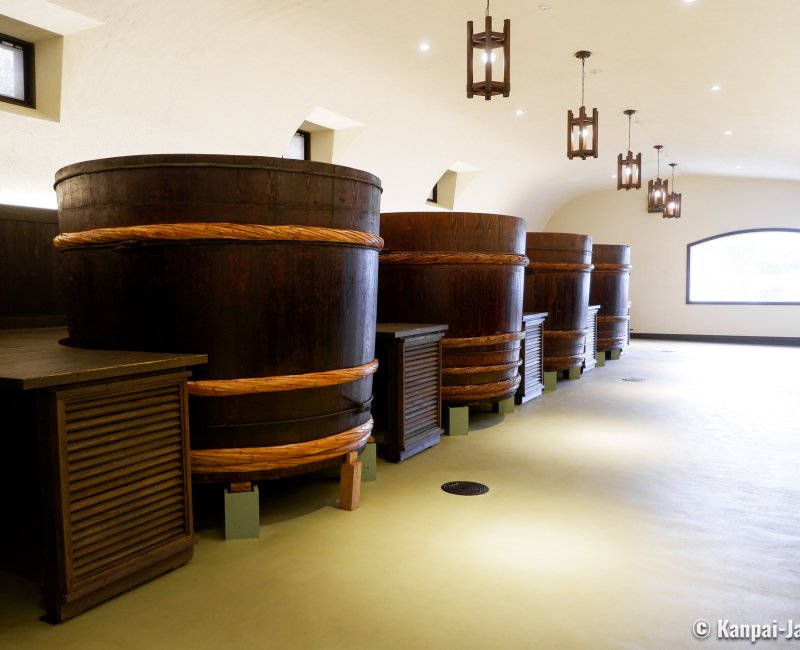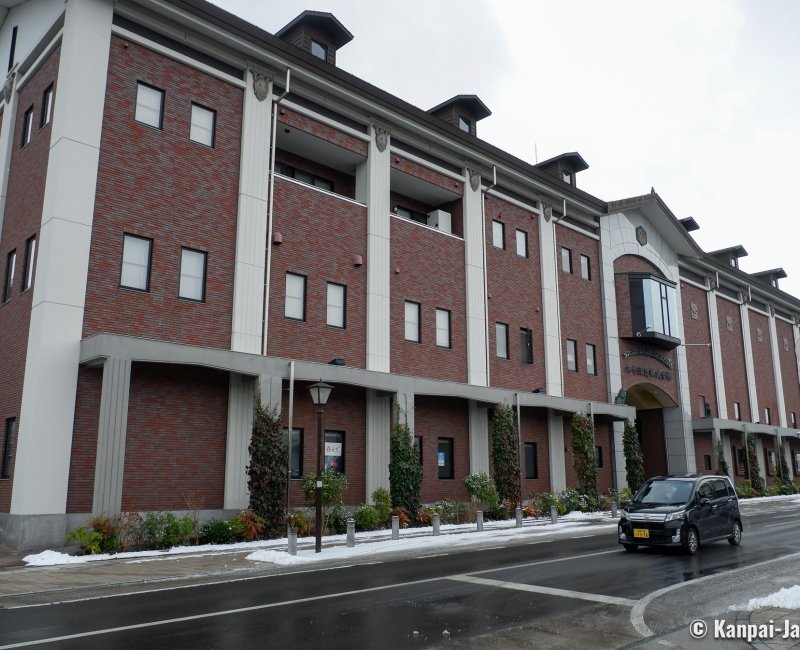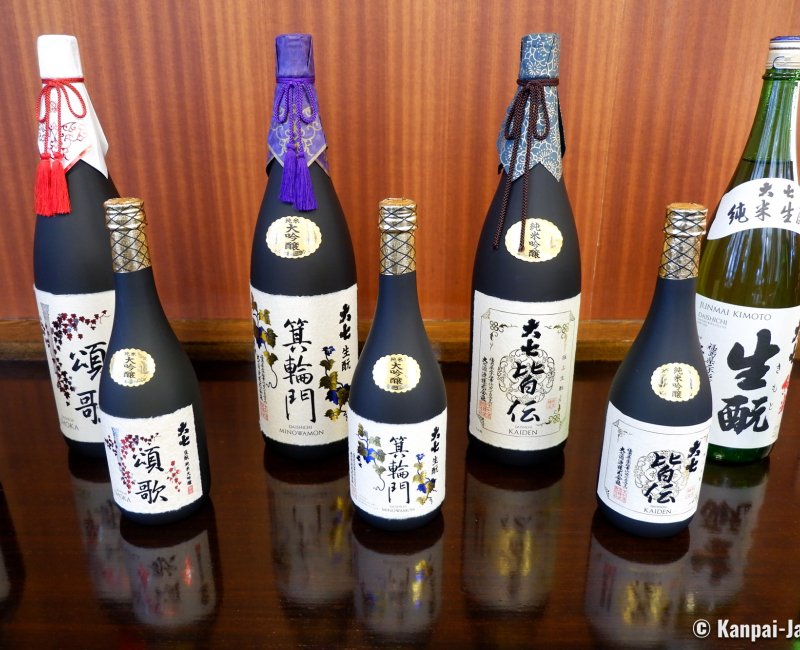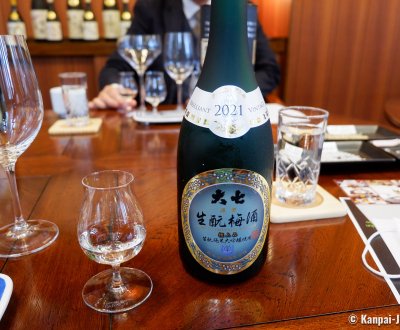Daishichi
The Exceptional Kimoto Sake Brewed in Nihonmatsu
Daishichi is a Japanese sake brewery located in Nihonmatsu, a small town of Fukushima prefecture. Founded in 1752 by Saburouemon Yoshichika Ohta, the establishment has been managed by the same family for 10 generations. Its use of the traditional brewing method called Kimoto makes its sake very distinctive. The tour of the brewery ends with a tasting of upscale nihonshu.
Located about twenty kilometers south to Fukushima City, the feudal town of Nihonmatsu, despite its smallness, has a few interesting tourist attractions, such as Dake Onsen ♨️ thermal resort or the slopes of Mount Adatara and its beautiful hikes. In Kasumigajo Castle 🏯 Park, at the center of the city, a few minutes’ walk lead to Daishichi Sake 🍶 Brewery that makes one of Japan’s most renowned sake (or nihonshu).
A family know-how passed down for 10 generations
Saburouemon Yoshichika Ohta was born in 1721 in a wealthy family successful in the nihonshu business for nearly a century, however, as he was not the first-born, he could not inherit the family business. He nonetheless founded his own brewery called Oyama in 1752, aged 31 years old, with the support of his relatives and thanks to the important connections of his family-in-law in the area.
The establishment changed named to "Daishichi Brewery" thanks to the 8th head of the family, Shichiuemon Teiichi Ohta, who wanted to emphasize "Shichiuemon", the new name used by the family thanks to the new bonds created with the samurai clan Tamaru. Besides, he won the 1rst prize of the Fukushima sake contest in 1927, then the 1rst prize at the national contest in 1938, leading his establishment to an unprecedented excellence level.
More than 2 centuries and a half after its beginnings, Daishichi Sake Brewery is still one of the most iconic breweries of Japan and stands out thanks to a traditional brewing method called Kimoto, more complex to carry out but that allows the sake to develop flavors unachievable with more conventional methods.
The current owner, Hideharu Ohta, like his ancestors, is completely involved in his business and has implemented several improvements, such as:
- Reintroducing brewing in wooden tanks;
- Refining rice polishing techniques, and particularly the super-flat rice polishing of utmost importance;
- Creating an anoxic bottling system to avoid oxidation and preserve flavors; and,
- The complete refurbishment of the brewery in 2002, for the brand's 250 years anniversary.
With several prestigious awards in his line of work, Hideharu Ohta is still striving for his brand to stay at its best and has earned for it a great international fame.

Kimoto brewing method
The first written mentions of the Kimoto Brewing Method, qualified as slow and meticulous, date to 1667 in the beginning of the Edo period (1603 – 1868). It was widely used in sake breweries until the early 20th century, until faster and more modern processes overshadowed it. For example, the Yamahai or Sokujomoto methods have the advantage of reducing the brewing time and consequently the error risk in the brewing process. However, the Kimoto method was never really abandoned and recently nihonshu breweries prioritizing craft quality found a renewed interest in the method.
The Kimoto method’s specificity takes place after the rice is washed, cooked and the koji-kin mold added. The preparation is then placed in large and shallow tubs called hangiri. Then the rice is manually mashed using a large paddle-like tool, the kaburagai, in a specific brewing process called "Yamaoroshi."
When the rice’s texture is like a thick paste, it is transferred into into larger vats called tsubodai. Airtight containers filled with hot water are immersed in the preparation causing the temperature rise so as to foster the development of lactic acid bacteria to the detriment of all other bacteria. Yeast is also added and, consequently, the temperature continues to rise gradually, without any human intervention.
The nitrate present in the beginning is consumed and the acid lactic bacteria die due to their own lactic acid production. Yeast then takes the upper hand, to produce a drink with a maximum level of purity, unparalleled by the other brewing methods.
The Kimoto method is also advantageous for sake conservation: with such a brewing process, the beverage ages better. It can improve over time, whereas it is usually recommended to drink the common nihonshu within the year following their making.

The brewery guide tour
In Nihonmatsu, Daishichi Sake Brewery is sheltered in a sumptuous and impressive building, that is accessible thanks to a guided tour, with a prior reservation by Internet 📶. The large entrance hall displays sake bottles produced on site. A space is dedicated to tasting sessions and to air an introductory 10 minutes-long video documentary at the beginning of the visit.
A member of staff then guides the visitors to discover the various rooms dedicated to each step of nihonshu making. The tour crosses a small inner courtyard occupied by an old quince tree that was struck by lightning and offered to the 4th head of the brewery from the personal gardens of Niwa Nagatomi (1803 - 1866), the lord of Nihonmatsu at the times. The back building shelters several kinds of vats, including the wooden ones, that are very old.
Due to the delicacy of the Kimoto brewing process, the guided tour is only partially maintained during the sake brewing period, each year from late October to the end of March. Like in a laboratory, employees must follow strict hygiene rules to avoid the introduction of bacteria that would impair the process.

Tasting of prestigious sake
The brewery tour ends with a tasting of various sake. Two courses are available at Daishichi:
- The General course, with the tasting of 5 specific nihonshu: Junmai Kimoto Classic, Masakura, Minowamon, Horeki and Kimoto Umeshu;
- The Premium course, with the tasting of 7 different sake: Junmai Kimoto Classic, old Junmai Kimoto Yamadanishiki, Masakura, Minowamon, Horeki, Myoka Rangyoku and Kimoto Umeshu Gokujohin.
The drinks are served in a specific order to allow a perfect evaluation of each production’s gustative properties. Each nihonshu is served in a glass with a different shape to suit its aromas and fragrances.
Excessive drinking put your health at risk. Alcoholic beverages should be consumed in moderation.
The tasting session is a high-end experience, however it offers an unparalleled quality for value. As a matter of fact, the average retail price of the best bottles is largely exceeding the cost of the visit: allow, for example, more than €450 for a 72cl bottle of Myoka Rangyoku.
Tourists still have very few occasions to try such high quality sake in Japan and we therefore highly recommend the trip to Daishichi to amateurs of Japanese traditional alcohols, especially as it is easily accessible by JR train 🚅 from Tokyo.


